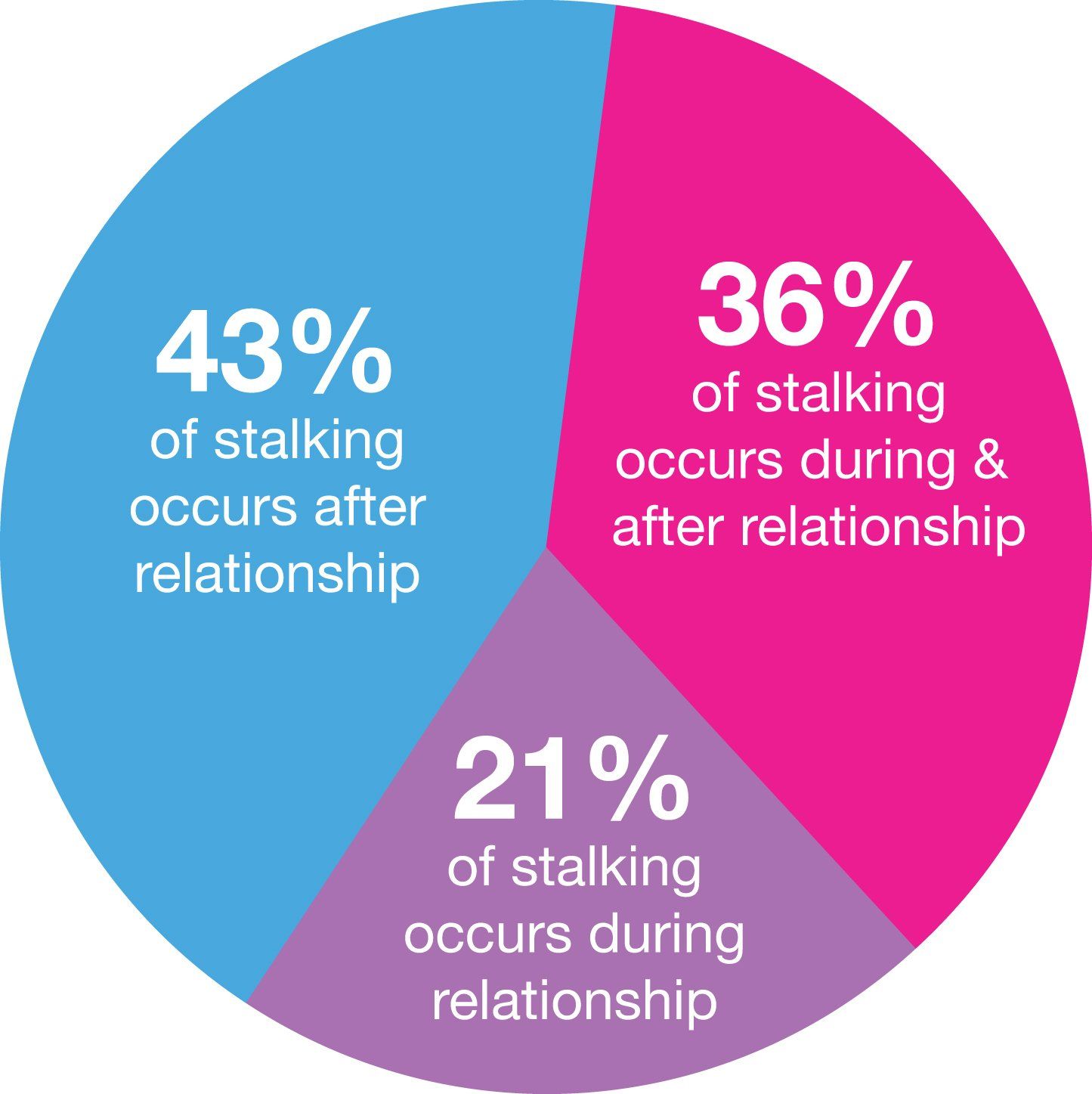STALKING
Recognizing the Signs and What to Do
Engaging in a course of conduct directed at a specific person that would cause a reasonable person to fear for his or her safety or the safety of others or suffer substantial emotional distress.
TYPES OF STALKERS
Domestic: Stalking a former spouse or girlfriend/boyfriend
Lust: Serial predators who stalk victim after victim
Love-Scorned: An acquaintance, coworker, neighbor, etc. who desires an intimate relationship with the victim, but is rejected
Revenge: An angry former employee, an aggrieved business partner, a resentful neighbor, a vindictive relative, or any other person
Types of Stalkers

Intimate Partner Stalkers
- Usually have criminal records and abuse drugs and/or alcohol
- Are threatening to their victims
- Follow through on their threats of violence and assault their victims
- Threaten with, or actually use weapons on their victims
- Reoffend after a court intervention and reoffend more quickly
- Contact and approach victims more frequently
- Are insulting and interfering/intrusive in the victim’s life
- Escalate in frequency and intensity and pursue more often
Safety Planning Tips
- Trust your instincts
- Provide a photo of the stalker and inform neighbors, friends and co-workers of the situation
- Change your routine
- Make sure school/work does not give out your contact info
- Change locks and upgrade security systems
- Notify police, especially if you are in an unsafe situation
- Don’t communicate with the stalker
- Take threats seriously
- Work with a local domestic violence shelter or victim services program to develop a safety plan
- Keep evidence of the stalking
- Consider getting a restraining order







